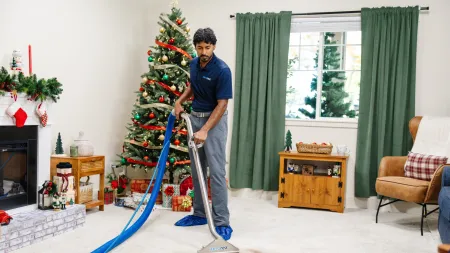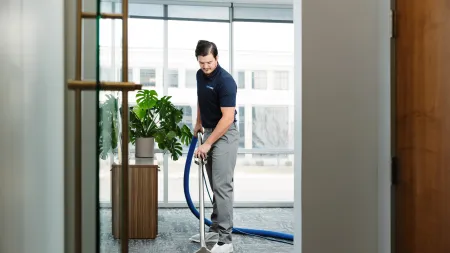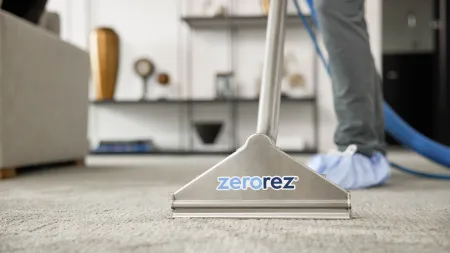Best Way to Remove Water from Carpet in Basements and Elsewhere
A leaking washing machine, leaky roof, overflowing bath or sink, burst pipe, broken dishwasher, or natural disaster can cause flooding in your house, apartment, or basement. Act fast lest mold and mildew grow or damages occur, costing you a lot of money.
When this happens, you may be left wondering how to get water out of a carpet? Generally, you'll want to do the following:
- Stop the flow of water from its source
- Properly ventilate the room
- Use the wet and dry vacuum cleaner to remove the excessive water (or hire an expert like Zerorez® to use a high-tech water extraction machine to save time and energy)
- Use towels or newspapers to soak up the remaining water
- Apply baking soda
- Run a fan and dehumidifier to dry the carpet
- Vacuum the carpet
This article also explains how to remove rainwater from carpet and more. Read on!
How to Get Water Out of a Carpet
Getting water out of a carpet is a tiring, time-consuming task that requires swift action before more damage occurs. It takes 2 to 3 hours to do this, but the time could be less or more, depending on the room size, the equipment you're using, your skill level, and the amount of water on the carpet.
Materials Needed:
- Baking soda
- White towels
- Wet/dry vacuum
- Dehumidifier
- Fan
- Rubber gloves
- Face mask
The best way to remove water from carpets is to follow the steps below.
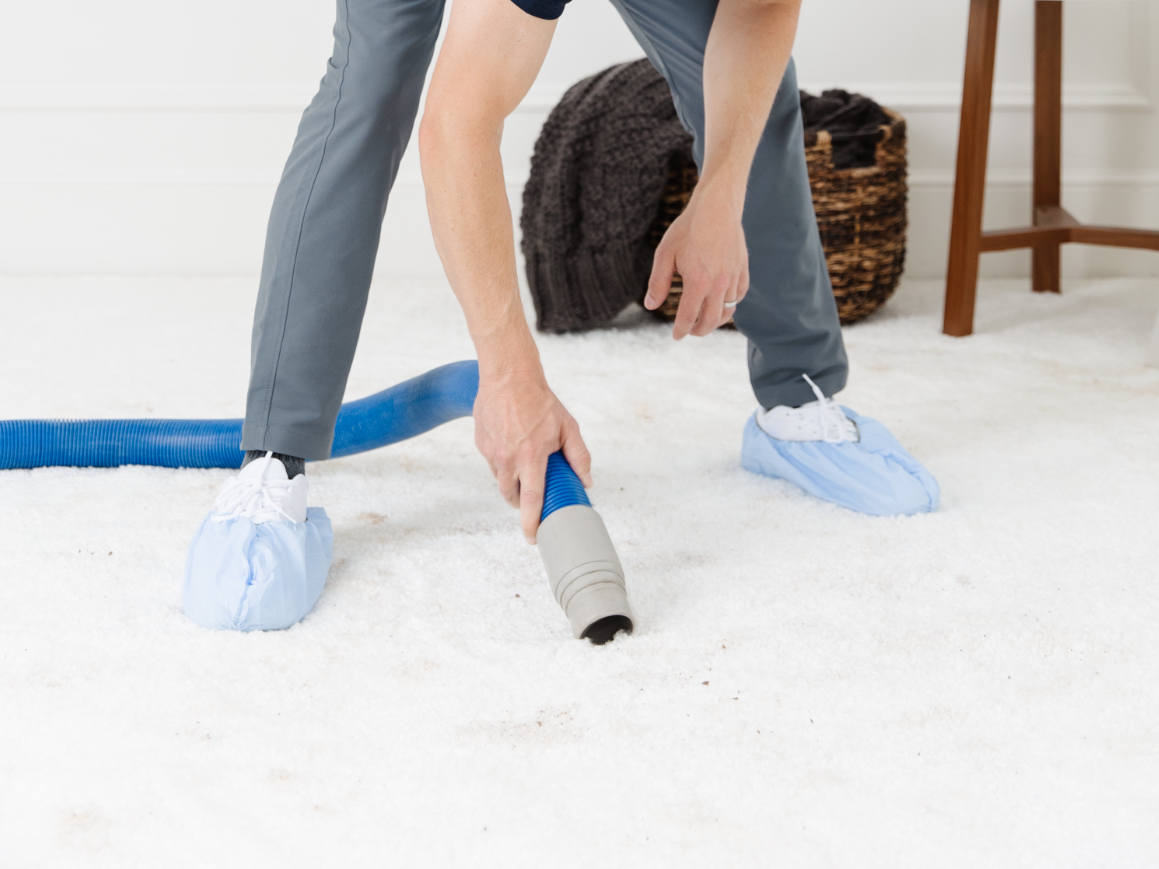
1. Determine the Source of Water and Create a Safe Working Environment
If the flooded water is near any electrical source, shut off the electricity supply for the affected rooms before walking into the room.
Determine the source of water and stop its flow. Inspect the type of water to determine if it's safe to touch or if you should hire a professional.
Water flooding in your house has three categories:
- Clean water: Rainwater or busted pipes; this water is not mixed with contaminants or connected to appliances.
- Gray water: From washing machines and dishwashers; contains contaminants such as cleaning chemicals.
- Black water: Water from toilet backflows, sewage, or water close to these sources after a storm or hurricane.
Don't touch black or gray water; it could cause severe health issues.
Call Zerorez to schedule a water removal service immediately.
Suppose it's a burst water pipe, rainwater, or melting snow. If you have the necessary tools, materials, and skills, you can remove the water without involving a professional.
2. Remove the Furniture and Properly Ventilate the Room
Remove any removable furniture from the room. Leaving furniture on a wet carpet reduces airflow, causing mold and mildew to grow.
Open the doors and windows or run the air conditioner if it's too humid.
3. Remove Excess Water With the Wet and Dry Vacuum
Use a wet-dry vacuum to remove as much water as possible. You can borrow one from the nearest hardware store. To extract water from the carpet, firmly press the wet-dry vacuum into the carpet and move it slowly.
Make multiple passes until there's no more water left to extract. If you can't get a wet-dry vacuum, use pumps or white towels to soak up as much standing water as possible.
4. Pat Dry the Carpet
To remove the remaining water, pat dry the carpet using white towels. Replace the wet towels with dry ones as needed.
5. Assess the Carpet Pad
If the carpet is flooded, the subfloor and the carpet pad are likely wet, trapping moisture and creating room for microbial growth. Ignoring this moisture results in respiratory health problems, structural damage, and a foul odor.
Peel back your carpet from the corners and look underneath to inspect the padding and the subfloor. If the padding is wet, remove it and dispose of it.
Moisture meters help check the moisture in and under the carpets. You can use it instead of peeling off the carpet.
If, after checking several places on the carpet, the results are within the allowable range, run fans and open the windows and doors to help the carpet dry.
If it's not within the allowable range or the situation exceeds your expertise, contact the nearest Zerorez location for quick and professional help.
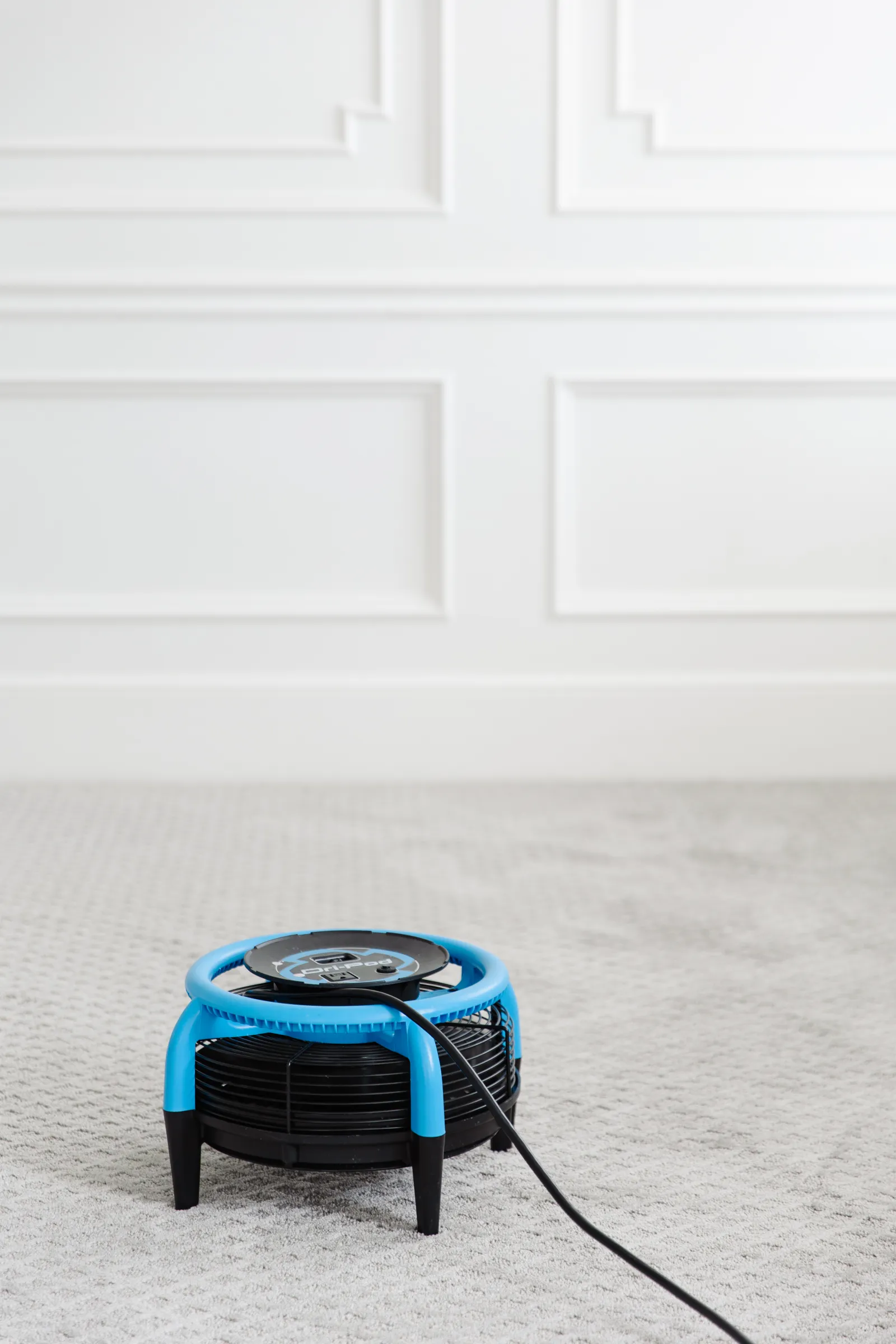
6. Run the Fan and a Dehumidifier Over the Subfloor
Run fans for 24 (or 48) hours to dry the subfloor. Box fans or mover blower fans are better because you can place them in strategic places to create a fresh cross breeze.
Use a high-powered dehumidifier to remove excess moisture on the subfloor, preventing mold and mildew from growing or damaging your structure.
7. Replace the Carpet and Deodorize
Buy a new padding once the subfloor and the carpet are dry. Relay the carpet over the subfloor and new padding.
Sprinkle baking soda on the carpet to deodorize it. Allow the baking soda to sit for 3 to 4 hours (or more), and then vacuum it.
Return the furniture to the room and resume your daily activities comfortably.
Best Way to Remove Water From Basement Carpet
Basement flooding is a common challenge for most tenants and homeowners, mainly during rainy seasons. If you have installed a carpet in the basement, it could create a foul odor and grow mold and mildew if you delay taking action after a flood.
Below is the best way to remove water from basement carpet.
Disconnect Electrical Power
Don't step on the basement water before you disconnect the power source. Turn off circuit breakers in the basement to avoid electrical shock when removing the water. If there is an electrical outlet, contact an electrician for advice.
Stop the Flow of Water
Don't start removing the water until you have addressed the source. It could be a leaking roof, plumbing problem, heavy rainfall, or foundation leaks. Contact a professional to fix major issues such as foundation leaks and plumbing issues to prevent further damage.
If the water source is something you can fix, do so to mitigate further damage.
Extract Excessive Water From the Basement Carpet
If there's gray or black water in the basement, call Zerorez immediately. If it's clean water and you believe you have the necessary skill to remove it, rent a powerful wet-dry vacuum. Set it to "wet mode" to extract excessive water from the basement carpet.
Slowly move the vacuum over the carpet to extract water from the basement carpet. If there's excessive water, keep emptying the vacuum tank regularly to improve efficiency.
Move Furniture
Wet basement furniture can transfer paint to your carpet or cause mold to grow. Move basement furniture to a dry place where it can dry as you work on the carpet.
Seek help from a friend, relative, or neighbor if your furniture is heavy. Furniture sliders also help move furniture without damaging it or the carpet. Use them.
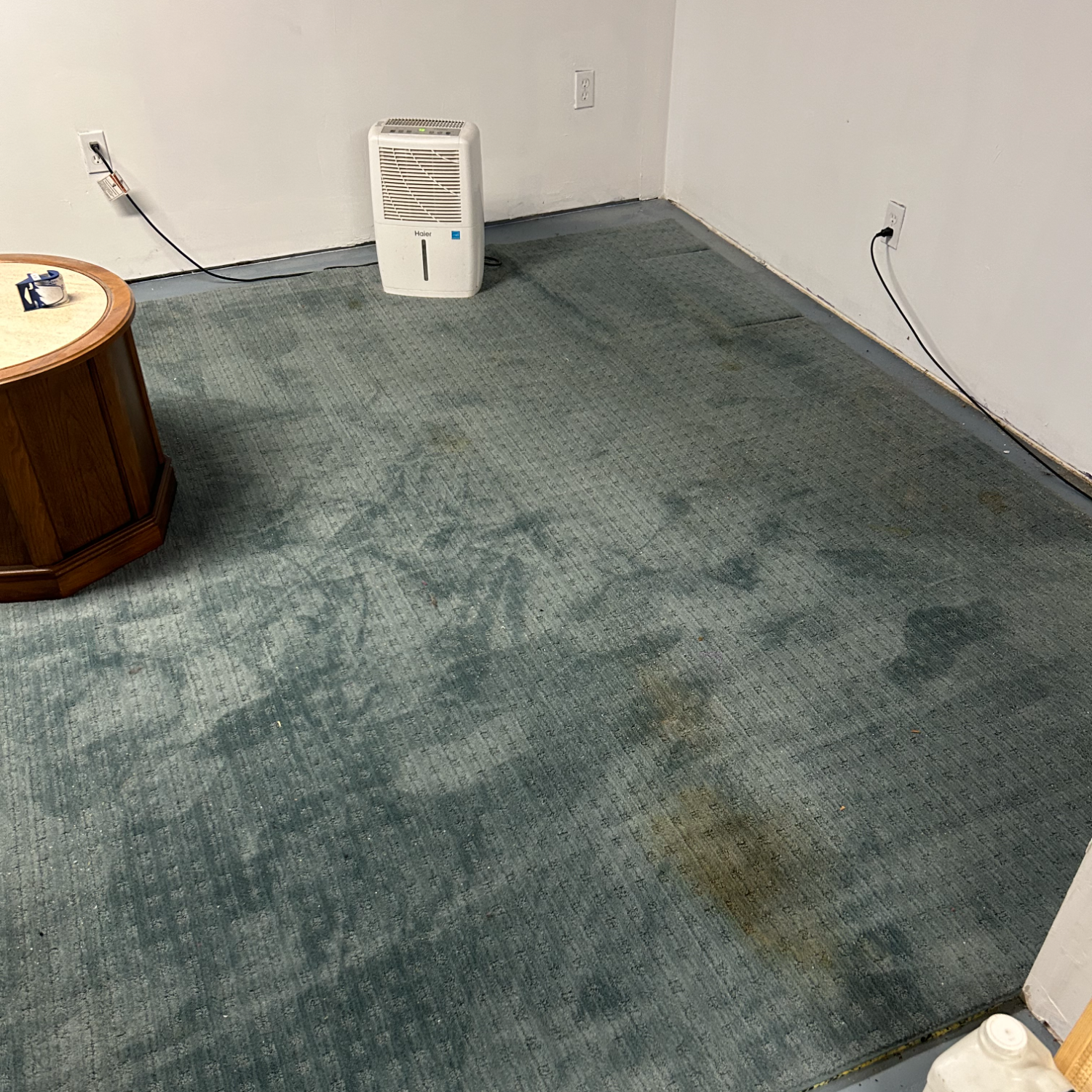
Extract More Water
Use white towels or those the same color as your carpet to soak up the water your wet-dry vacuum could not extract. This is crucial in ensuring you have extracted as much water as possible to speed up the basement's carpet drying process.
Check the Basement Carpet Padding
Use a moisture meter to check if there's any moisture left in the carpet, padding, or subfloor. Lift the edges of the carpet to check the padding if you don't have a moisture meter.
If the padding is excessively wet, remove it. You need to replace it with a new one; it's affordable and relatively easy to install.
If the padding is not too wet, you don't have to replace it unless you wish to.
Increase Air Circulation
Encourage water evaporation by running several floor fans in the basement. Aim each at the carpet to accelerate drying to mitigate mildew and mold growth or structural damage. If there are other fans, for example, ceiling fans, box fans, and oscillating fans, run them to increase airflow circulation.
A powerful dehumidifier is also helpful in increasing airflow. Open basement windows, too.
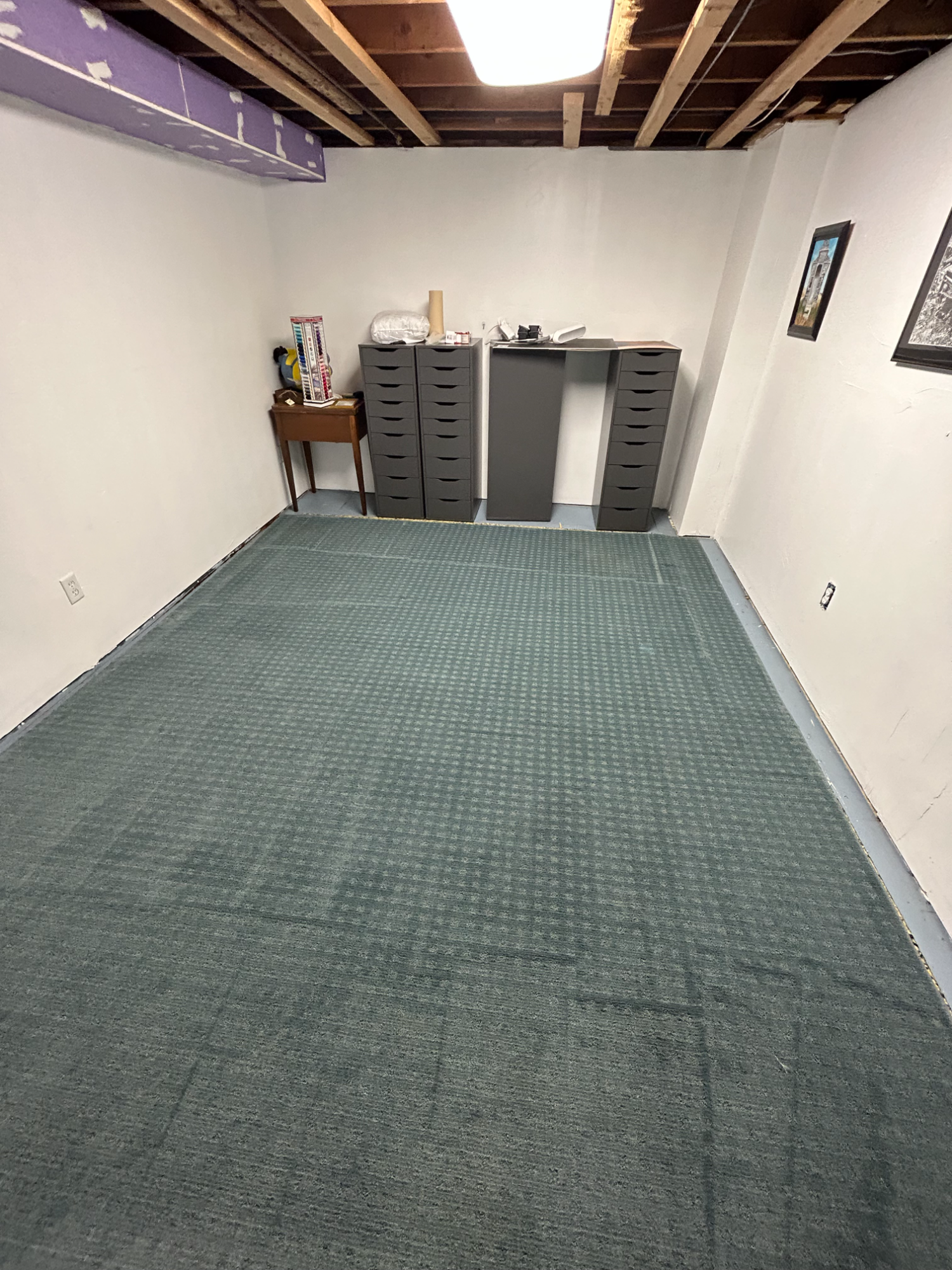
Deodorize the Basement Carpet
A damp carpet creates a foul smell. Baking soda effectively eliminates carpet odors and removes moisture. Sprinkle a generous amount on the basement carpet, allow it to sit for several hours, and then vacuum.
If your carpet has an odor or isn't completely dry after all the effort, contact a professional carpet cleaner quickly. Professionals such as Zerorez will assess the situation and offer the necessary recommendations. They'll fix the situation, leaving you with a clean, dry basement carpet.
Hire a Professional Carpet Cleaner
Successfully removing all the water from your carpet doesn't mean your carpet is clean. You removed the water; you didn't clean the carpet! Dirt and lingering particles could hide in the seemingly clean and dry carpet. You could see several water stains on your carpet that need to be removed.
Contact Zerorez to professionally clean the carpet. This will help create a safe and healthy environment for you and your loved ones.
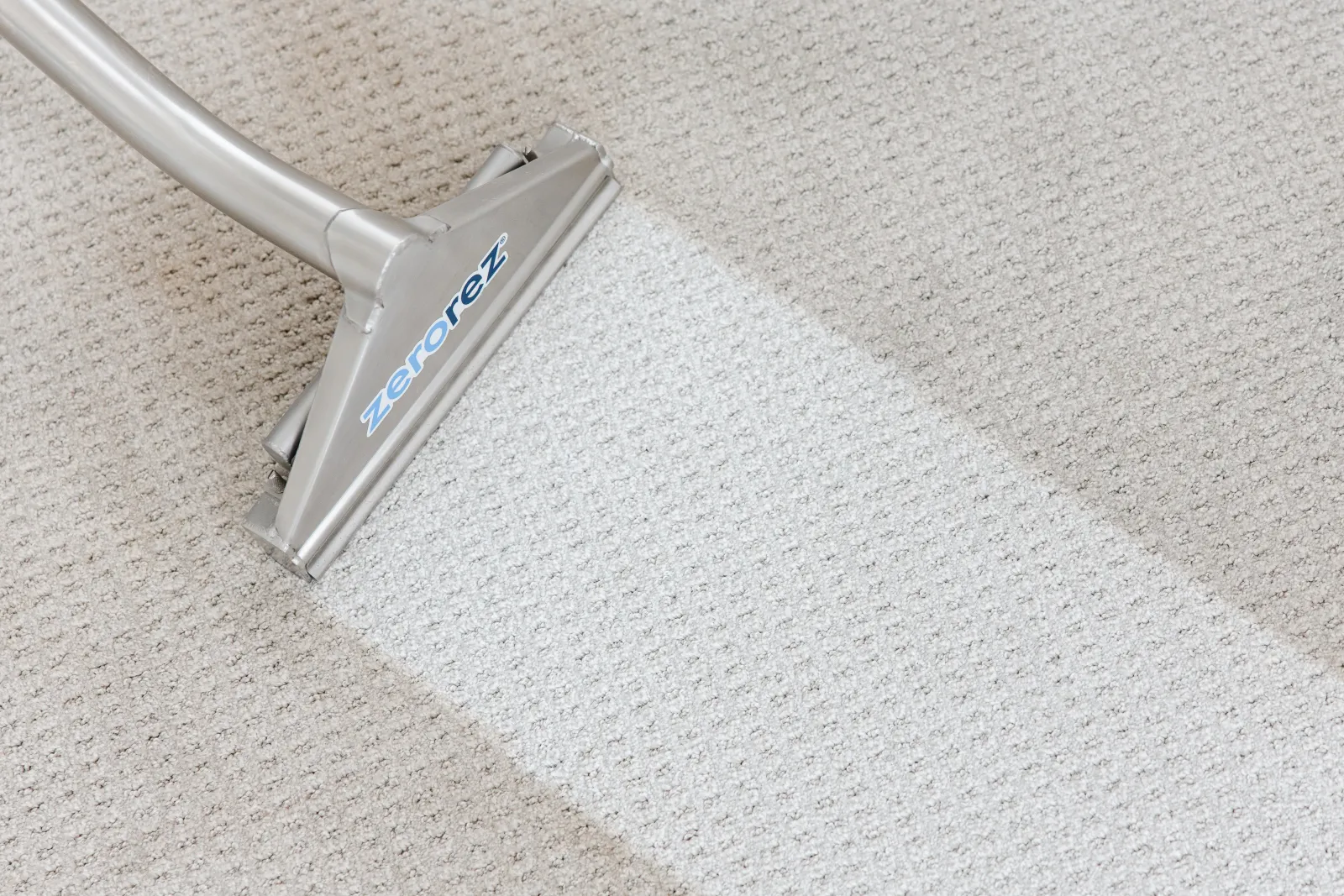
Zerorez uses professional extraction tools to remove water, clean the affected carpets and rooms, and conduct a moisture test to verify if any moisture is left after cleaning, limiting the possibility of carpet wicking.
We have powerful vacuum truck mounts in the vans and can extract water from your carpet. Some of our locations offer flood mitigation services to pump out water from basements after bad storms.
Our team provides free on-site evaluation and provides a quote at no cost. Save our number and post it on the walls of rooms highly susceptible to water damage so that even in your absence, other family members can contact us immediately if they notice water on the floor. Our contact is 866-937-6739. Reach out to us and let us help you!

